The A to Z Challenge – L for London Fog of 1952
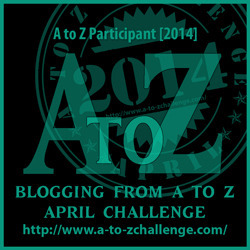 The A to Z Challenge is on! Hello and welcome to my Main blog. My name is Rose Anderson and I’m a romance novelist. Join me and more than 2279 bloggers and authors as we blog the alphabet throughout the month of April. My daily posts will be mostly history with some science topics here and there. I’ve chosen subjects that tickle my fancy, I hope you will find them interesting too.
The A to Z Challenge is on! Hello and welcome to my Main blog. My name is Rose Anderson and I’m a romance novelist. Join me and more than 2279 bloggers and authors as we blog the alphabet throughout the month of April. My daily posts will be mostly history with some science topics here and there. I’ve chosen subjects that tickle my fancy, I hope you will find them interesting too.
Keep the topic rolling! If you have comments or questions, add them at the end of the post. I may not know the answer off the top of my head but I love research and would enjoy discussing my topics further. Comments can be made just below my bio in the tag section.
*FREE* If you enjoy reading scorching romances with unique twists and characters full of personality and depth, scroll down for a free chapter sampler. Find my book trailers in the tabs above.
۞>>>>۞<<<<۞>>>>۞<<<<۞>>>>۞
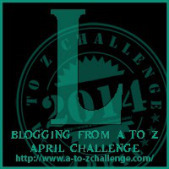 Today’s Calliope’s Writing Tablet post is brought to you by the letter L ~
Today’s Calliope’s Writing Tablet post is brought to you by the letter L ~
L for London Fog of 1952
As a child visiting relatives in San Fransisco in the 1960′s, I remember watching the fog roll in off the ocean. It was exciting for this Midwestern girl to see such an awe-inspiring thing. As if the ocean wasn’t amazing on its own. The fog came rolling in like a cloud wall until you could only see a few feet in front of you. That’s basically what fog is — a ground cloud. It’s my understanding that the atmospheric conditions concocting a heavy 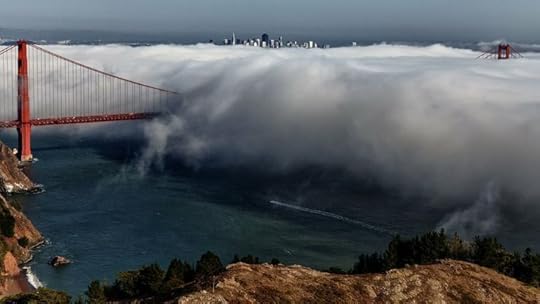 fog only requires a 4° difference between air temperature and dew point. Air cooled to the dewpoint can no longer hold all of the water vapor it contains. Water droplets condense, and that makes fog. Were these ground clouds in the cold upper sky instead, we might have rain. Weather creates extraordinary phenomena.
fog only requires a 4° difference between air temperature and dew point. Air cooled to the dewpoint can no longer hold all of the water vapor it contains. Water droplets condense, and that makes fog. Were these ground clouds in the cold upper sky instead, we might have rain. Weather creates extraordinary phenomena.
The weather conditions that came into play over the UK in December back in 1952 created a fog of another kind — a killer fog.
Smoke + fog = smog
Earliest Roman accounts mention the fogginess of Britain. Islands often have heavy mists and fogs. They’re called advection fog — air that’s been warmed over land meets the cold surface of the ocean. As Britain is surrounded by sea, so common are fogs to this island, the fogs even have names. Along the Northumbrian coast the fog is called the fret. In the southeaster portion of Scotland it’s the haar.
With much of the land deforested in its long inhabitation, the populace turned to peat and coal to cook with and warm their hearths. This put soot into the foggy air. So heavy and persistent the smoggy fog of 1807, Charles Dickens wrote it into his novel Bleak House. A popular name for the fog during that time was the London particular. In 1813, a fog “smelling of coal tar” was so unrelenting, the prince regent on his outing had to turn his carriage around and go home.
Not just a bad smell
The economic recovery came slow during 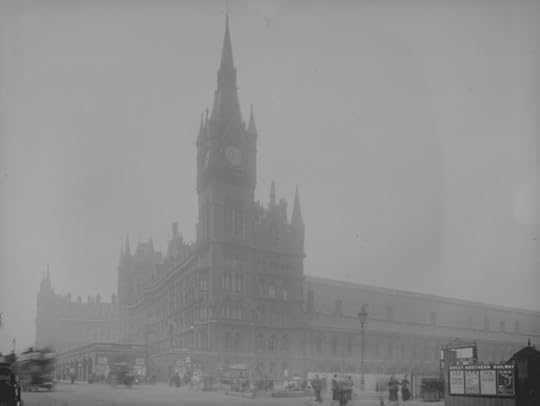 the post-war reconstruction and money was tight. Around 1952 London had just given up its electric buses for cheaper diesel. At the time, the nation’s high-grade cleaner-burning coal was exported and Londoners were left to burn a lesser-grade high-sulfur coal to heat their homes. From here I’ll paint you a picture…
the post-war reconstruction and money was tight. Around 1952 London had just given up its electric buses for cheaper diesel. At the time, the nation’s high-grade cleaner-burning coal was exported and Londoners were left to burn a lesser-grade high-sulfur coal to heat their homes. From here I’ll paint you a picture…
The cold fog rolled in December 4th and Londoners paid it little mind. As mentioned above, fogs and mists were a regular feature in their lives. An early cold snap saw coal-fired plants and houses cranking up the heat. As midday approached, the fog mixed with thousands of tons of soot in the air and soon took on a yellowish cast. Little did anyone realize this fog wouldn’t be clearing anytime soon. A temperature inversion had formed 1000 feet above the city and acted like a dome that trapped the noxious air inside. But it was cold and the factories and homes continued to burn their cheap coal. Before long a 30-mile wide blanket of sulfurous carbon monoxide stink enveloped London.
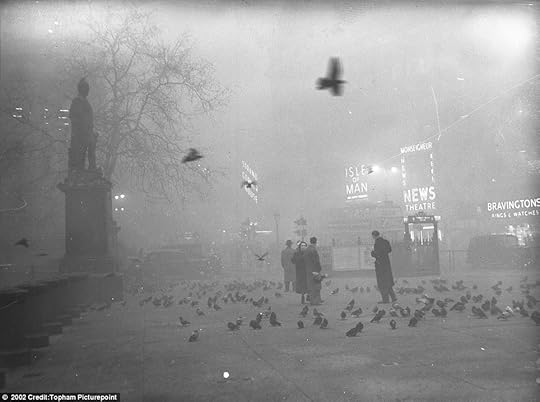 For four days the entire city was immobilized by this toxic fog. River traffic stopped as did all transportation outside of the London Underground. At one point, men walked with lanterns ahead of the buses for a time to keep traffic moving, but that too stopped cold. Schools closed. Movie theaters closed because patrons couldn’t see the screens. Accounts in some parts of the city say people couldn’t see their hand before their eyes nor their feet as they walked. Worse, death had come.
For four days the entire city was immobilized by this toxic fog. River traffic stopped as did all transportation outside of the London Underground. At one point, men walked with lanterns ahead of the buses for a time to keep traffic moving, but that too stopped cold. Schools closed. Movie theaters closed because patrons couldn’t see the screens. Accounts in some parts of the city say people couldn’t see their hand before their eyes nor their feet as they walked. Worse, death had come.
A black oily soot smudged faces and every corner of London. Several prize heifers died at the famous Sheffield Show. In desperation, farmers took to rigging makeshift gas masks for their animals. People too were beginning to perish. Initial estimates put the death toll at 4000, mainly those with respiratory problems, infants, and the elderly. On December 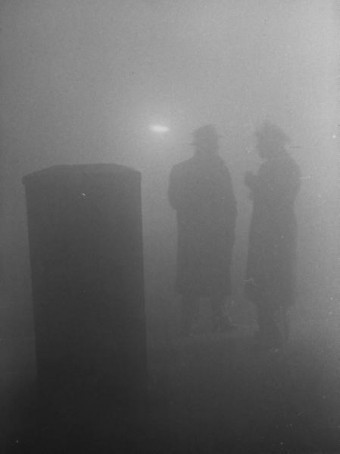 9th, a cold wind blew the the smog out to sea. The after-effects lingered and the death toll rose to approximately 12,000.
9th, a cold wind blew the the smog out to sea. The after-effects lingered and the death toll rose to approximately 12,000.
Unbelievably, change came slow. Though an investigation determined they had a serious pollution problem, the government didn’t want to change things at first. It took nearly four years for Parliament to pass the Clean Air Act of 1956 that restricted coal burning in urban areas. Transitioning from coal to gas, oil, and electricity took years and during that time other deadly fogs would come. The killer fog of1962 claimed 750 lives.
~More~
They had an idea something was wrong before the tragedy of 1952.
Here’s another clip
An extra 2⊄: Mankind is certainly a short-sighted creature. In my portion of the world we have politicians determined to repeal the Clean Air Act. As an environmentalist, this infuriates me because it’s all profit motivated. Yes, money talks. It always has. But what good is money if breathing, a process so necessary to life, becomes impossible? One need only look at China where air pollution is choking the populace even as I write this. We’d all better make some changes soon.
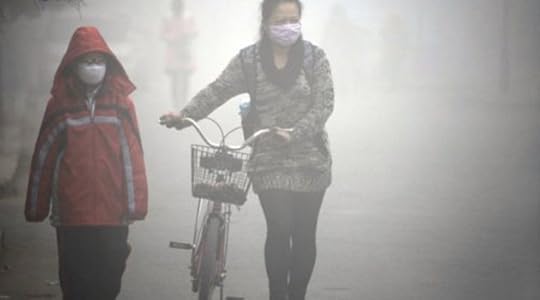
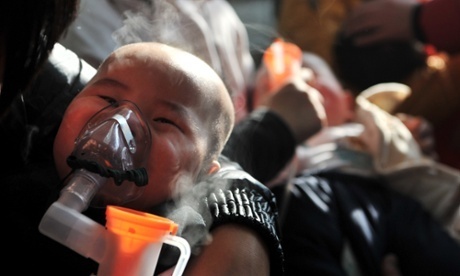
“Water and air, the two essential fluids on which all life depends,
have become global garbage cans.”
~ Jacques-Yves Cousteau
Tomorrow ~ letter M
۞>>>>۞<<<<۞>>>>۞<<<<۞
 Last Week for wild foods recipes on my satellite blog!
Last Week for wild foods recipes on my satellite blog!
http://calliopeswritingtablet.blogspot.com/
The Authors in Bloom event highlights those things authors do outside the fiction. We garden, we cook, we craft etc. One of the more unusual things my husband and I have done was lead wild foods programs for Chicago’s Field Museum. For this event I’ll be sharing my recipes. Do stop by. You may have delicious ingredients waiting in your backyard!
۞>>>>۞<<<<۞>>>>۞<<<<۞
 See what’s happening on the RB4U blog today
See what’s happening on the RB4U blog today
http://romancebooks4us.blogspot.com/
Our April contest is on. We’ll have 3 winners and a lot of prizes to split among them. http://www.romancebooks4us.com/
۞>>>>۞<<<<۞>>>>۞<<<<۞
Love Waits in Unexpected Places -
Scorching Samplings of Unusual Love Stories
https://www.smashwords.com/books/view/333971
Download your copy of my free chapter sampler!

۞>>>>۞<<<<۞>>>>۞<<<<۞>>>>۞<<<< ۞>>>>۞<<<<۞>>>>۞<<<<۞






